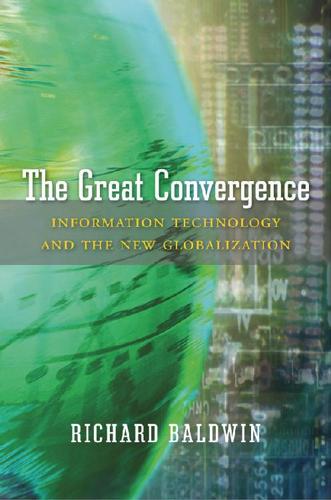
The Great Convergence: Information Technology and the New Globalization
by
Richard Baldwin
Published 14 Nov 2016
In a 2014 report from the World Bank, Making Global Value Chains Work for Development, Daria Taglioni and Deborah Winkler write that three new policy issues arise when it comes to global value chains.8 How to enter global value chains. How to expand and strengthen participation in global value chains. How to turn global value chain participation into sustainable development. The GVC Entry Question In global value chains, like dancing, it takes two to tango. National governments cannot unilaterally dictate global value chain participation. They have to induce foreign partners to set up new production facilities or invite existing national firms into their network. As discussed in Chapter 8, global value chain production requires two sets of policies.
…
For other developing nations, the spillovers that North Korea tries so hard to stifle are exactly what is attractive about participating in the global value chain. The challenge is to leverage the global value chain factories to raise living standards and create a self-fueling industrialization process. In short, the question is: How can policy ensure that global value chain participation benefits the domestic economy as a whole through more and better paid jobs, better living conditions, superior training, infrastructure, and the like? This is our next subject. But don’t get your hopes up. I don’t have the answers. New Policy Questions For policymakers, the critical issue is how to make global value chains work for their nation’s development.
…
This suggests that Peru may have to focus on sectors where physical distance is less important—for example, stages of production that involve services. Another aspect of this question is an evaluation of the type of global value chain to join. A key distinction is between buyer-led and seller-led global value chains. The Bombardier case discussed in Chapter 3 is an example of what Duke sociologist Gary Gereffi calls “producer-driven value chains.” Gereffi—the man who coined the phrase “global value chain” and was instrumental in getting economists to view global value chains as something more than foreign direct investment—notes that in producer-led networks, it is the manufacturer who is in charge of arranging the foreign production and coordinating it with domestic production, marketing, sales, after-sales services, and the like.
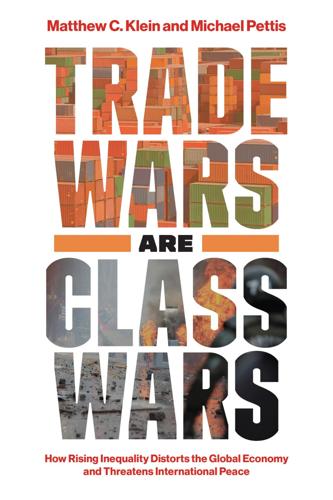
Trade Wars Are Class Wars: How Rising Inequality Distorts the Global Economy and Threatens International Peace
by
Matthew C. Klein
Published 18 May 2020
Adam Smith’s insight into the power of specialization would be applied at a scale he would never have imagined.19 How Global Value Chains and Ports Distort the Bilateral Trade Data The drive south across the Detroit River from the U.S. city of the same name to the Canadian city of Windsor only takes about twenty minutes. For nearly a century, the big three American automakers have exploited this proximity by operating plants in both Michigan and the southern bit of Ontario. This Great Lakes motor vehicle manufacturing complex might be the first recognizably modern global value chain. Components, material inputs, and finished cars and trucks are constantly moving across the border.
…
Even though Chinese producers have since become far less reliant on imported components, global value chains still have an impact on the bilateral trade data. Even now, about a third of the value of China’s imports from Korea and Taiwan originated elsewhere, reflecting those countries’ positions in the middle of international supply chains. Tai-wanese academics calculate that standard figures overstate the value of their country’s trade relationship with China by a factor of three.24 The increasing importance of these global value chains means that conventional bilateral trade data no longer do a good job of measuring the actual value created by workers and machines in each country.
…
See also global finance; specific banks Bank of America, 63 Bank of England: and Baring crisis, 59, 60 and global credit boom (1820s), 43, 50, 51 and global credit boom (1830s), 52, 53–54 and global financial crisis (1873), 58 and gold standard, 186, 187 Bank of France, 54, 188 Baring Brothers bank, 47, 58–61 Barro, Robert J., 240n14 Belgium, U.S. exports to, 29–30 Belt and Road Initiative (China), 124–25 Bermuda tax haven, 35, 36 bilateral trade imbalances: and corporate tax avoidance, 30–39 and global value chains, 27–30 Navarro on, 96, 97–100 BIS (Bank for International Settlements), 18f, 42f, 63–64, 110, 193 Bismarck, Otto von, 57, 92–93, 143 Bofinger, Peter, 138 Bolívar, Simón, 49 Brady, Jim, 57 Brazil: development model in, 108 and global credit boom (1820s), 49, 51 U.S. corporation income in, 37 Bretton Woods, 21–23, 189–91, 219. See also International Monetary Fund Bretton Woods II, 195–201 Bundesbank (Germany), 137–38, 140, 154, 164, 194 Canada: capital controls in, 223 colonial interests in, 6, 17 and global value chains, 27 savings and investment in, 76 U.S. corporation income in, 37 U.S. exports to, 28 capital controls, 61, 123, 200, 202, 223 capital export neutrality, 31 capital flight, 41, 123, 224 cargo shipping.
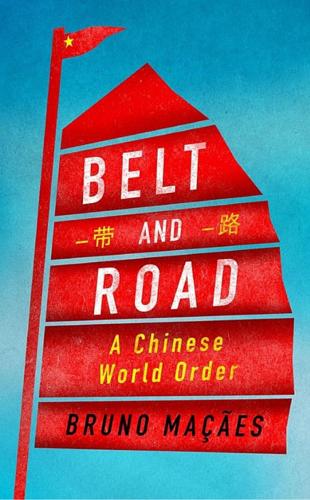
Belt and Road: A Chinese World Order
by
Bruno Maçães
Published 1 Feb 2019
These firms are thus able to shape global value chains, control the locations of production and the distribution of value throughout the chain and directly affect the position of other actors along the chain. This is not contradicted by the fact that lead firms often delegate part of the organizing function to key suppliers, who take on the role of orchestrating flows of products, capital, managers and supervisors, and in some cases workers, across diverse production locations across the globe and increasingly shape the geography of the global value chain. One of the easiest ways to understand how global value chains denote relations of power that tend to operate outside the sphere of political relations is to note that the opening up of markets and the removal of trade barriers is often immaterial for producers in developing countries, who can export to North America and Western Europe only to the extent that they gain access to the lead firms in global value chains.
…
Taking advantage of internationally fragmented value chains, China was able to approach the development process in a piecemeal fashion. “By allowing developing nations to focus on one part or one stage at a time, the global value chain revolution made knowledge absorption easier. The requisite technology and skills base for making a product could be digested bit by bit.”1 The offshoring of production stages meant that rich-nation firms sent their marketing, managerial, and technical know-how along with the production stages that had been moved offshore. What Richard Baldwin calls the “second unbundling”—or the “global value chain revolution”—redrew the boundaries of competitiveness. Revolutionary advances in information and communication technology changed the cost-benefit analysis by making it much easier to coordinate different stages of production at great distances.
…
Patterns of international specialization and division of labor are particularly relevant in the age of global value chains. Today, very few products are manufactured in a single country. A country’s manufacturing imports are more likely to be intermediate goods—that is, commodities, components, or semi-finished products that a country uses to make its own products. These could be final products or new segments in a global network of producers and suppliers. One third of China’s imports are destined for export processing zones, which account for almost half of the country’s exports. Global value chains can become so complex that imports can also contain returned value added that originated in the importing country.
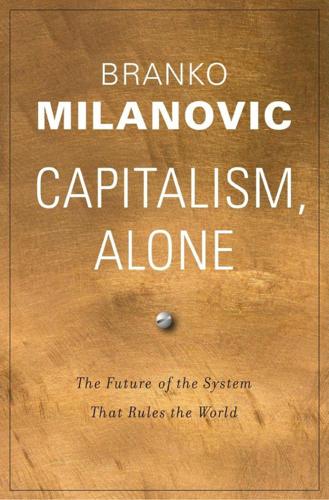
Capitalism, Alone: The Future of the System That Rules the World
by
Branko Milanovic
Published 23 Sep 2019
But against that one should note that aid so far has borne very little fruit and that even if this were to change, it would take a very long time for this approach to solve the essential problem of vast differences in income levels, and thus an unstoppable incentive to migrate.10 Therefore, the alternative to the flexible menu of citizenship rights would turn out again to be a solution of zero migration, which would mean Fortress Europe and Fortress America and many more deaths along the borders between these two rich areas and their poorer southern neighbors. Not a desirable outcome in any way. We move next to capital mobility under conditions of globalization. 4.2 Capital: Global Value Chains The global value chain, a way of organizing production such that different stages of production are located in different countries, is probably the most important organizational innovation in this era of globalization. Global value chains were made possible both by the technological ability to control production processes effectively from distant locations and by global respect for property rights. In the past, the lack of these two elements limited the expansion of foreign capital.
…
I begin this chapter with a discussion of labor under conditions of globalization. I then turn to capital, whose mobility, perhaps best reflected through so-called global value chains, accelerates the growth of poorer countries and, in the medium to long run, erodes the citizenship rents that motivate migration. Thus both cross-border movements, those of labor as well as of capital, are equilibrating movements whose ultimate outcome—probably never to be reached—would be a world of minimal differences in mean per capita income among nations. Why do I single out global value chains as characteristic of globalization? I do so because of their twofold revolutionary impact.
…
Poor countries are thus caught in a poverty trap: in order to develop they need to upgrade their production, but technologies that exist at their K / L ratios are old-fashioned and inefficient. All of this Global South pessimism was upended by the rise of global value chains. Today, for a country to develop, it must be included in Western supply chains rather than trying to delink from the rich world. A key reason for this is that foreign investors see global value chains as integral parts of their own production processes: they no longer have to be “begged” to bring in the most advanced or the most appropriate technology. They now have the incentive to introduce technological development at the level of the wage rate and the K / L ratio they face in poor countries, thus doing away with the poverty trap that Allen identified.

The Innovation Illusion: How So Little Is Created by So Many Working So Hard
by
Fredrik Erixon
and
Bjorn Weigel
Published 3 Oct 2016
For documentation of literature and trade patterns, see also WTO, “World Trade Report 2008.” 40.Escaith and Inomata, “Trade Patterns and Global Value Chains in East Asia.” 41.Hummels, Rapoport, and Yi, “Vertical Specialization.” 42.Lanz and Miroudot, “Intra-firm Trade.” 43.Bernard et al., “Intra-firm Trade and Product Contractibility.” 44.Timmer et al., “Slicing up Global Value Chains,” 104. 45.Dedrick, Kraemer, and Linden, “Who Profits from Innovation in Global Value Chains?” 46.Athukorala, “Production Networks and Trade Patterns in East Asia.” 47.IMF, “German-Central European Supply Chain – Cluster Report.” 48.For data on the foreign value-added content of exports in Europe, see Amador, Cappariello, and Stehrer, “Global Value Chains: A View from the Euro Area.” 49.Stehrer and Stöllinger, “The Central European Manufacturing Core.” 50.Nordås, Pinali, and Grosso, “Logistics and Time as a Trade Barrier.” 51.Boddin and Henze, “International Trade and the Servitization of Manufacturing”; Lodefalk, “The Role of Services for Manufacturing Firm Exports.” 52.National Board of Trade (Sweden), “Everybody Is in Services,” 9. 53.Grossman and Hart, “The Costs and Benefits of Ownership.” 54.This view draws on Baumol, Panzar, and Willig, Contestable Markets and the Theory of Industry Structure. 55.Marx, Capital, ch. 32. 56.Shields, “Consolidation and Concentration in the US Dairy Industry.” 57.Corbae and D’Erasmo, “A Quantitative Model of Banking Industry Dynamics.” 58.FCC, “18th Mobile Wireless Competition Report.” 59.Murray, “5 Things You Didn’t Know about the Fortune 500.” 60.Freund, Rich People Poor Countries, 55. 61.Hillerud, “Ericsson var före Apple med paddan.” 62.OECD, “The Future of Productivity.” 63.Antràs and Yeaple, “Multinational Firms and the Structure of International Trade.” 64.However, a note of caution is warranted.
…
19.Smithers, The Road to Recovery, appendix 2. 20.For a comparison, see Lebrun and Pérez Ruiz, “Demand Patterns in France, Germany, and Belgium,” 5. 21.The Economist, “The Sick Man of the Euro.” 22.Sinn, “The Pathological Export Boom and the Bazaar Effect.” 23.Aichele, Felbermayr, and Heiland, “Neues von der Basarökonomie.” 24.Sally, States and Firms. 25.Servan-Schreiber, The American Challenge. 26.Safarian, Multinational Enterprise and Public Policy. 27.Dunning, The Globalization of Business. 28.IMD, IMD World Competitiveness Yearbook. 29.Hansakul and Levinger, “China–EU Relations,” 2. 30.Galbraith, The New Industrial State, 38. 31.Bernard, Jensen, and Schott, “Importers, Exporters and Multinationals.” 32.UNCTAD, “World Investment Report 2013.” 33.Altomonte et al., “Global Value Chains during the Great Trade Collapse.” 34.Baldwin, “Trade and Industrialisation after Globalisation’s 2nd Unbundling.” 35.Manyika et al., “Digital Globalization.” 36.Baldwin, “Globalisation.” 37.Desai, “The Decentering of the Global Firm.” 38.Baldwin and Robert-Nicoud, “Trade-in-Goods and Trade-in-Tasks.” 39.Krugman, “Growing World Trade.” For documentation of literature and trade patterns, see also WTO, “World Trade Report 2008.” 40.Escaith and Inomata, “Trade Patterns and Global Value Chains in East Asia.” 41.Hummels, Rapoport, and Yi, “Vertical Specialization.” 42.Lanz and Miroudot, “Intra-firm Trade.” 43.Bernard et al., “Intra-firm Trade and Product Contractibility.” 44.Timmer et al., “Slicing up Global Value Chains,” 104. 45.Dedrick, Kraemer, and Linden, “Who Profits from Innovation in Global Value Chains?”
…
Timmer, Marcel P., Abdul Azeez Erumban, Bart Los, Robert Stehrer, and Gaaitzen J. de Vries, “Slicing up Global Value Chains.” Journal of Economic Perspectives, 28.2 (2014): 99–118. Toynbee, Arnold, A Study of History: Abridgement of Volumes I–VI by D. C. Somervell. Oxford University Press, 1987. Tracy, Abigail, “Why Some of Google’s Coolest Projects Flop Badly.” Vocativ, Mar. 19, 2015. At http://www.scientificamerican.com/article/why-some-of-google-s-coolest-projects-flop-badly/. UNCTAD, “World Investment Report 2013. Global Value Chains: Investment and Trade for Development.” United Nations Conference on Trade and Development, 2013.

The Measure of Progress: Counting What Really Matters
by
Diane Coyle
Published 15 Apr 2025
Large companies that sell physical goods, such as Nike or Apple, or for that matter many auto, pharmaceu tical, and engineering companies, increasingly do not manufacture the products they sell; they design, market, and sell the products but may contract out the manufacturing and assembly across the globe (Coyle and Nguyen 2022). Chapter 6 looks at this phenomenon of production in global value chains. The phenomenon of the increasing weightlessness or intangibility of economic value is a symbol of the substantial structural change the economy has undergone. Yet economic statistics do not rec ord intangible value very well (Haskel and Westlake 2018). 20 Ch a p t er On e Another major question is how best to m easure the role played by the “free” digital goods and s ervices so many of us use so often.
…
In both cases, the focus on higher-value upstream or downstream activities involves the creation of intangible assets such as R&D, patented designs, brand value, or the organisational capital created by managing complicated global production chains. How have t hese alternative forms of production come about? The presence of global value chains (GVCs) (or global production networks, GPNs, as they are also called, to emphasise that t here need not be a simple linear structure) is a striking feature of modern production— although it may be reversing slightly given new geopolitical tensions. These value chains require the reorganisation and reallocation of steps in the production process to “tasks” (Acemoglu and Autor 2011, Baldwin and Robert-Nicoud 2014, Timmer et al. 2014).
…
Kijania-Placek (Eds.), In the scope of logic, methodology and philosophy of science: Vol. two of the 11th International Congress of Logic, R efer e nce s 267 Methodology and Philosophy of Science, Cracow, August 1999 (pp. 497–517). Springer Science & Business Media. Antràs, P., and Chor, D. (2022). Global value chains. In G. Gopinath, E. Helpman, and K. Rogoff (Eds.), Handbook of international economics (Vol. 5, pp. 297–376). Elsevier. Araki, S., Bassanini, A., Green, A., Marcolin, L., and Volpin, C. (2023). Labor market concentration and competition policy across the Atlantic (IZA Discussion Paper No. 15641).

Connectography: Mapping the Future of Global Civilization
by
Parag Khanna
Published 18 Apr 2016
Nisbett, Richard E. The Geography of Thought: How Asians and Westerners Think Differently…and Why. Free Press, 2004. Nolan, Peter. Is China Buying the World? Polity, 2013. Norbu, Dawa. China’s Tibet Policy. Routledge, 2001. OECD. Interconnected Economies: Benefiting from Global Value Chains. OECD, 2013. OECD, WTO, UNCTAD. Implications of Global Value Chains for Trade, Investment, Development, and Jobs. OECD, 2013. Ogilvy, James. Many Dimensional Man. HarperCollins, 1979. Ohmae, Kenichi. The End of the Nation State: The Rise of Regional Economies. Free Press, 1996. ———. The Next Global Stage: Challenges and Opportunities in Our Borderless World.
…
*6 The geographer Harm de Blij has identified twelve physical realms, each with multiple subregions: Europe, Russia, North America, Central America, South America, Sub-Saharan Africa, North Africa/Southwest Asia, South Asia, East Asia, Southeast Asia, Australasia, and the Pacific Islands. *7 A more formal definition of supply chain is the systems of organizations, people, technology activities, information, and resources involved in moving products and services from producers to customers. “Global supply chain” and “global value chain” are often used interchangeably, with the latter sometimes preferred to emphasize the value-added processes not inherent in simple supply-demand terminology. Others speak of value webs or value networks to capture the wide range of participants involved in supply chains and their interdependent and mutually beneficial nature
…
Components and inputs from screws and bolts to dyes and paints to copper and glass circulate for assembly, finishing, packaging, and more tasks along the supply chain. Like data packets routed through servers around the world before arriving at your neighbor’s computer, there is no avoiding the radically dispersed nature of supply chains. Global value chains are becoming one complex but comprehensive whole. European companies have software development in the United States, manufacturing in Asia, back-office work in the Middle East, and joint ventures with local partners for after-sales services such as repair and insurance in every market they sell in.
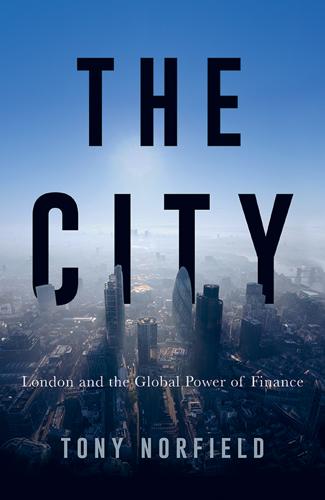
The City
by
Tony Norfield
He argued that in Europe financial businesses were run ‘chiefly by men of a single and peculiar race, who have behind them many centuries of financial experience’ (p. 86). 28Cain and Hopkins, British Imperialism, 1688–2000, Table 5.8, p. 165. 29I will not cover this issue further, but the following are useful references: John Smith, ‘The GDP Illusion: Value Added versus Value Capture’, Monthly Review, Vol. 64, No. 3, July–August 2012; John Smith, ‘Southern Labour – “Peripheral” No Longer: A Reply to Jane Hardy’, International Socialism, Vol. 140, 2013; William Milberg and Deborah Winkler, ‘Trade, Crisis, and Recovery: Restructuring Global Value Chains’, in Global Value Chains in a Postcrisis World: A Development Perspective, Washington: World Bank, 2012; Norfield, ‘Capitalist Production Good, Capitalist Finance Bad’ and ‘Labour’s Colonial Policy’, both at economicsofimperialism.blogspot.com. 30Credit Suisse Research Institute, Global Wealth Report 2014, October 2014, p. 25. 31Michie, The City of London, pp. 70, 76–8. 32Federal Reserve, 2013 Survey of Consumer Finances, September 2014, pp. 510–11, at federalreserve.gov.
…
The world monetary system Eichengreen, Barry 2011, Exorbitant Privilege: The Rise and Fall of the Dollar, Oxford: Oxford University Press Konings, Martijn 2009, ‘American Finance and Empire in Historical Perspective’, in Panitch, Leo and Martijn Konings (eds) 2009, American Empire and the Political Economy of Global Finance, Hampshire: Palgrave Macmillan Michie, Ranald C. 1992, The City of London: Continuity and Change, 1850–1990, London: Macmillan Norfield, Tony 2014, ‘Capitalist Production Good, Capitalist Finance Bad’, 6 January 2014, economicsofimperialism.blogspot.com Spiro, David E. 1999, The Hidden Hand of American Hegemony: Petrodollar Recycling and International Markets, New York: Cornell University Press Steil, Benn 2013, The Battle of Bretton Woods: John Maynard Keynes, Harry Dexter White, and the Making of a New World Order, Council on Foreign Relations Books, New Jersey: Princeton University Press Contemporary economic and financial developments Christophers, Brett 2013, Banking Across Boundaries: Placing Finance in Capitalism, Chichester: Wiley-Blackwell Lewis, Michael 2011, ‘When Irish Eyes Are Crying’, Vanity Fair, 8 February 2011 Milberg, William and Deborah Winkler 2012, ‘Trade, Crisis, and Recovery: Restructuring Global Value Chains’ in Global Value Chains in a Postcrisis World, A Development Perspective, Washington: World Bank Norfield, Tony 2012, ‘Derivatives and Capitalist Markets: the Speculative Heart of Capital’, Historical Materialism, Vol. 20 No. 1, 2012 No.rfield, Tony 2013, ‘Derivatives, Money, Finance and Imperialism: A Response to Bryan and Rafferty’, Historical Materialism, Vol. 21 No. 2, 2012 Shaxson, Nicholas 2011, Treasure Islands: Tax Havens and the Men Who Stole the World, London: The Bodley Head Smith, John 2013, ‘Southern Labour – “Peripheral” No Longer: A Reply to Jane Hardy’, International Socialism, 140, isj.org.uk Vitali, S, Glattfelder J.
…
Before the 1980s, major countries invested in the rest of the world directly, where they owned a significant stake in foreign companies, plantations or property, or in portfolio investments, where they owned foreign equities and bonds, or perhaps just in terms of foreign loans. But a key feature of the world economy in recent decades has been the formation of ‘global value chains’.24 These occur when international companies employ foreign suppliers to deliver goods and services that they then use in their final production. The big corporations may not fully own the foreign suppliers, or even have any ownership stake in them at all. But the suppliers, especially those in low-wage countries, will be tied into the production cycle of the major corporations from the rich countries.
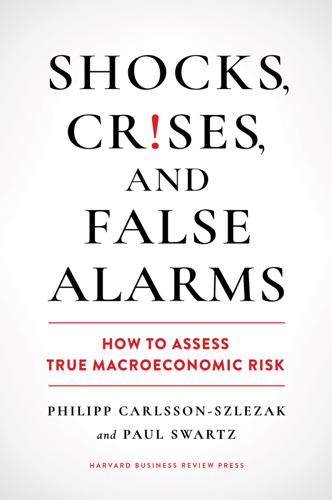
Shocks, Crises, and False Alarms: How to Assess True Macroeconomic Risk
by
Philipp Carlsson-Szlezak
and
Paul Swartz
Published 8 Jul 2024
We believe that—barring a new structural shock such as a severe financial recession or an inflation regime break—the era of tightness will endure. From disinflationary to inflationary global value chains. In the past few decades, the thrust of global production was to prioritize cost and efficiency over all else. The emerging web of global value chains delivered many years of deflation in durable goods markets (see chapter 19). As global value chains begin to lean toward security and resilience, the prospect that the disinflationary impulse will be more modest—or maybe even inflationary—is real. This will add to the upward bias in cyclical inflation risks.
…
So, why is higher but healthy likely in the years ahead? Leveraging our framework in figure 14.2, and prior chapters, we point to the following: A conviction that the anchored inflation regime will remain in place (see chapter 12). Within the anchored regime, we expect inflation bias to the upside because of tight labor markets, retreating global value chains, and higher investment demand (see chapter 13). A recession will happen sooner or later, but we have no predisposition to thinking that contemporary risks point toward a structurally damaging one. Recessions with structural overhang can inject slack into the economy that takes time to overcome—think 2008.
…
In the following two chapters we do exactly that—with reference to trade and the dollar. CHAPTER 19 Trade, Not as Bad as It Sounds Global trade may be the most tangible exposure to geopolitics that many executives and investors experience. The era of global convergence spawned an integrated trade architecture that firms spun into an intricate web of global value chains, lower costs, and profit expansion. As the simple narrative of geopolitical convergence gives way to the complex one of divergence, it is fair to expect trade architecture to adjust again, along with economic knock-on effects. In the popular telling, globalization is giving way to deglobalization, offshoring to reshoring.
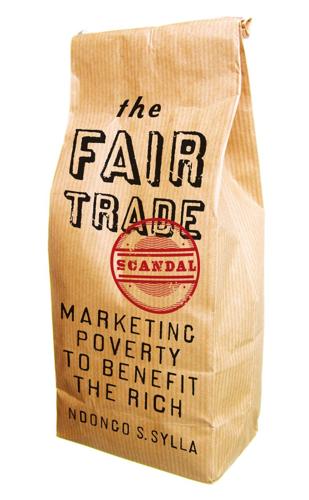
The Fair Trade Scandal: Marketing Poverty to Benefit the Rich
by
Ndongo Sylla
Published 21 Jan 2014
Since then, developing countries significantly reduced the restrictions they impose on agricultural and manufactured products (World Bank and IMF, 2009). This is one of the merits of the global value chain analysis2 – to highlight recent developments on the commodity markets (agricultural and nonagricultural). The concept of the ‘value chain’ refers to all the steps that 18 Sylla T02779 01 text 18 28/11/2013 13:04 inequalities of the trade system make up the cycle of products, from production to consumption. In fact, the global value chain (GVC) approach is especially opposed to the traditional orthodox vision, whereby product markets are considered a typical example of competitive market, with homogeneous products, a large number of small buyers and sellers, the absence of entry barriers, and relations between sellers and buyers that are supposed to be limited to on-the-spot financial transactions.
…
Georgescu-Roegen, Nicholas (1995 [1979]) La Décroissance: entropie–écologie– économie [Degrowth : Entropy–Ecology–Economy] (Paris: Éditions Sang de la Terre). Gereffi, Gary and Korzeniewicz, Miguel (eds) (1994) Commodity Chains and Global Capitalism (London: Praeger). Gereffi, Gary, Humphrey, John and Sturgeon, Timothy (2005) ‘The Governance of Global Value Chains’, Review of International Political Economy, 12(1): 78–104. Getz, Christy and Shreck, Aimee (2006) ‘What Organic and Fair Trade Labels do Not Tell Us: Towards a Place-based Understanding of Certification’, International Journal of Consumer Studies, 30(5): 490–501. GFN (Global Footprint Network) (2010) The Ecological Wealth of Nations (www. footprintnetwork.org, accessed August 2013).
…
Howell, George (2007) ‘The North–Southern Environmental Crisis: An Unequal Ecological Exchange Analysis’, New School Economic Review, 2(1): 77–99. Hudson, Ian, Hudson, Mark and Fridell, Mara (2013) Fair Trade, Sustainability and Social Change (Houndmills: Palgrave Macmillan). Hudson, Michael W. (2009) Trade, Development and Foreign Debt, new edition (New York: ISLET). Humphrey, John and Memedovic, Olga (2006) ‘Global Value Chains in the Agrifood Sector’, Working Paper (Vienna: United Nations Industrial Development Organization). ILO (International Labour Organization) (2010) ‘Key Indicators of Labour Market’ (www.ilo.kilm.org, accessed August 2010). Jacquiau, Christian (2006) Les Coulisses du commerce équitable: mensonges et vérités sur un petit business qui monte [Behind the Scenes of Fair Trade: The Truths and the Lies Regarding a Small Business that Rises] (Paris: Mille et une Nuits).
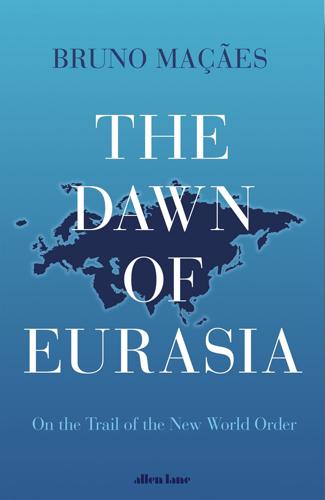
The Dawn of Eurasia: On the Trail of the New World Order
by
Bruno Macaes
Published 25 Jan 2018
In such cases, observers should be under no illusions that China, as the promoter of the initiative, is uniquely placed to pursue its interests. Patterns of international specialization and division of labour are particularly relevant in the age of global value chains. Today very few products are manufactured in a single country. A country’s manufacturing imports are actually more likely to be in intermediate goods, that is, commodities, parts and components or semi-finished products that it uses to make its own products. With the emergence of global value chains, the mercantilist approach that views exports as good and imports as bad starts to look counterproductive and even self-contradictory. If a country imposes high tariffs and obstacles on the imports of intermediate goods, its exports will be the first to suffer.
…
That decision coincided with the decline in Western power, evidenced in the aftermath of the Iraq war, but it was also precipitated by the clash between Western principles and values and an indigenous political and economic culture with which those values were ill at ease. By that time, Russia had already lost the chance to modernize its economy and take advantage of global value chains and transfers of knowledge made possible by the new information and communication technologies. The Russian critique of Western political values was certainly not followed by the embrace of an Asian alternative. It could have been Russia, rather than China, to revolutionize global capitalism.
…
He has a point, as even the European Union, when it created an ambitious transnational framework of rules and institutions, tended to abandon industrial policy on the grounds that such a policy could not be reproduced at a transnational level. This points to the clash between different integration models. Transport and communication networks are no doubt a precondition for the development of global value chains, but the crucial element is the set of industrial policy decisions by which different countries strive to move into new chains or new segments within an already occupied value chain. In order to avoid getting trapped in a middle-income trap – a situation in which a country becomes stuck with its previous growth model after attaining a certain level of income – and speed up the process of moving into higher-value segments, China wants its industrial policy to be sufficiently articulated with those countries occupying other segments and chains.

The Age of Entitlement: America Since the Sixties
by
Christopher Caldwell
Published 21 Jan 2020
Any country that could master a primitive assembly-line task—as Vietnam, to take a real-life example, did with auto-body wire harnesses—could take that task, and all the jobs that went with it, from a high-wage country, without ever industrializing at all. Corporations began to exploit these “global value chains.” In the work of New York Times columnist Thomas Friedman and other global economy boosters of the 1990s, you find value chains described as kaleidoscopic and complex: Nandan Nilekani, the CEO of Infosys, holding “virtual meetings” across eight time zones, at which “American designers could be on the screen speaking with their Indian software writers and their Asian manufacturers all at once.” But really there was less to global value chains than met the eye. They were not symphonies of specialist craftsmanship conducted by some boardroom maestro of industrial organization.
…
As long as Americans were frightened of speaking against civil rights legislation or, later, of being assailed as racists, sexists, homophobes, or xenophobes, their political representatives could resist nothing that presented itself in the name of “civil rights.” This meant that conflict, when it eventually came, would be constitutional conflict, with all the gravity that the adjective “constitutional” implies. 7 Winners Outsourcing and global value chains—Politicized lending and the finance crisis—Civil rights as a ruling-class cause—Google and Amazon as governments in embryo—Eliot Spitzer, Edward Snowden, and surveillance—The culture of internet moguls—The affinity between high tech and civil rights—The rise of philanthropy—Obama: governing without government—Nudge and behavioral economics—From gay rights to gay marriage—Windsor: the convergence of elites—Obergefell: triumph of the de facto constitution It took a long time for Americans to realize that the New Economy was a new economy.
…
In this sense the New Economy was like the new constitution. Over the fifty years leading up to the election of 2016, those who found ways to use the newly unleashed powers flourished. Those who continued to believe they could trust in old traditions, or vote their way to the country they wanted, lost ground. Outsourcing and global value chains The high wages of industrial workforces in Western countries had once been invulnerable, because the capital-owning part of an economy was bound by the laws of the land and the laws of economics to the fate of its workforce. The workers who made any given product needed to be near one another and near their bosses.

The Smartphone Society
by
Nicole Aschoff
For an in-depth discussion, see Hasinoff, Sexting Panic. 28. Rosin, “Why Kids Sext.” 29. Orenstein, Girls & Sex. 30. Hasinoff, Sexting Panic, 109, 97. 31. Aschoff, “The Smartphone Society,” 36. 32. Gereffi, “Beyond the Producer-Driven/Buyer-Driven Dichotomy,” 3. 33. Lee and Gereffi, “The Co-Evolution of Concentration in Mobile Phone Global Value Chains.” 34. See Abraham, The Elements of Power. 35. Jameson, “The End of Temporality,” 4, 700. 36. Digital Dividends, World Development Report (Washington, DC: World Bank Group, 2016). 37. Pew Charitable Trust, “24 Million Americans Still Lack Broadband Connectivity,” fact sheet, July 24, 2018. 38.
…
Life: The Movie—How Entertainment Conquered Reality. New York: Vintage Books, 2000. Galloway, Scott. The Four: The Hidden DNA of Amazon, Apple, Facebook, and Google. New York: Penguin Books, 2017, Kindle edition. Gereffi, Gary. “Beyond the Producer-Driven/Buyer-Driven Dichotomy: The Evolution of Global Value Chains in the Internet Era.” IDS Bulletin 32, no. 3 (2001). Gertner, Jon. The Idea Factory: Bell Labs and the Great Age of American Innovation. New York: Penguin Books, 2012. Ghose, Anindya. Tap: Unlocking the Mobile Economy. Cambridge, MA: MIT Press, 2017. Gillis, Tom. “Wikileaks Only Told You Half the Story—Why Encryption Matters More Than Ever.”
…
Lears, Jackson. Rebirth of a Nation: The Making of Modern America, 1877–1920. New York: Harper Perennial, 2010. Lecher, Colin. “An Internal Google Email Shows How the Company Cracks Down on Leaks.” Verge, May 22, 2017. Lee, Joonkoo, and Gary Gereffi. “The Co-Evolution of Concentration in Mobile Phone Global Value Chains and Its Impact on Social Upgrading in Developing Countries.” Capturing the Gains Working Paper 25. March 23, 2013. Available for download at SSRN, https://papers.ssrn.com/sol3/papers.cfm?abstract_id=2237510. Lee, Min Kyung, et al. “Working with Machines: The Impact of Algorithmic and Data-Driven Management on Human Workers.”
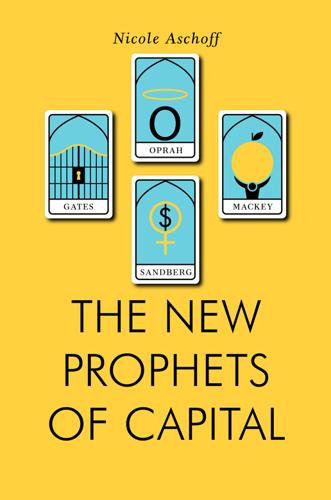
The New Prophets of Capital
by
Nicole Aschoff
Published 10 Mar 2015
In the age of global supply chains, free trade agreements, and capital flight, states have increasingly come to be seen as incapable of protecting their citizens from big global problems like ozone depletion, climate change, and biodiversity loss, and even more tractable problems, like controlling hazardous waste flows or regulating toxic substances in consumer goods.14 But while processes of globalization have delegitimized states and made citizens feel disconnected from the protective embrace of their respective governments, they have also helped to forge new, global identities based on feelings of “world-citizenship.”15 Westerners in particular have become uneasily aware of their power as consumers in shaping and driving global value chains. Whereas in the past consumers were considered “small polluters” relative to the big industrial polluters, in recent years this view has changed. Current global frameworks of environmental power place consumers on an equal plane with states, corporations, and civil-society actors. This newfound perception conflates consumption with politics and citizenship and has led to the widespread adoption of “ecological consumerism” and “lifestyle politics” as expressions of environmental awareness and concern.
…
As rural sociologist Phil McMichael argues, in the 1980s the “development project”—in which poor countries implemented national development strategies geared toward economic self-sufficiency and political sovereignty—was replaced by the “globalization project”—an ideological turn that encouraged states to lower their trade barriers, privatize resources and services, and embed themselves in global value chains.10 In this climate, national states lost legitimacy and, during the debt crisis, structural adjustment programs forced developing countries to dramatically curtail spending on health, education, and food subsidies. To ameliorate the human crisis that resulted, international governing bodies (UN, IMF, World Bank) encouraged poor states to outsource welfare provision to Western INGOs, which were considered more efficient and knowledgeable than local institutions.
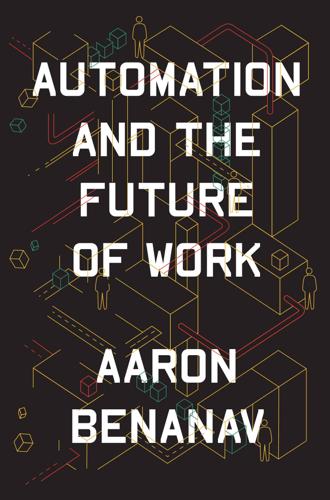
Automation and the Future of Work
by
Aaron Benanav
Published 3 Nov 2020
In more crowded international markets, rapid rates of industrial expansion became more difficult to achieve.34 The mechanism transmitting this problem across the world was depressed prices in global markets for manufactured goods (which also explains why shifting currency valuations played such a major role in determining competitiveness).35 As Harvard economist Dani Rodrik notes, “Developing countries ‘imported’ deindustrialization from the advanced countries” because they were “exposed to the relative price trends” coming from the capitalist core.36 Everywhere, depressed prices for manufactures led to falling income-per-unit capital ratios (falling capital productivity), then to falling rates of profit, then to lower rates of investment, and finally to lower output growth rates.37 In this environment, firms faced heightened competition for market share: as overall growth rates slowed, the only way for new firms to grow quickly was to steal market shares from established firms. The latter responded by retreating to the apex of global value chains. Overcapacity explains why, from the early 1970s, productivity growth rates fell less severely than output growth rates. Firms either raised their productivity levels as best they could—in an effort to keep up with their competitors despite the slower growth of the demand for their products—or else went under, disappearing from statistical averages.38 The implementation of technological innovations, although occurring at a slower pace than before, generated sector-wide job loss.39 As output growth rates fell toward (and in many cases below) productivity growth rates, in one country after another, deindustrialization spread worldwide.
…
The manufacturing employment share declines even as its level grows. 40 See Gary Gereffi, “The Organization of Buyer-Driven Global Commodity Chains: How US Retailers Shape Overseas Production Networks,” in Gary Gereffi and Miguel Korzeniewics, eds., Commodity Chains and Global Capitalism, Praeger, 1994. For a more recent account, see William Milberg and Deborah Winkler, Outsourcing Economics: Global Value Chains in Capitalist Development, Cambridge University Press, 2013. 41 Brenner, Economics of Global Turbulence, p. 113. 42 For an early account of this process, see G.K. Helleiner, “Manufacturing Exports from Less-Developed Countries and Multinational Firms,” Economic Journal, vol. 83, no. 329, 1973, p. 28ff.
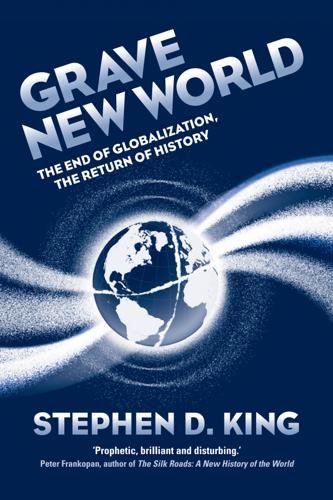
Grave New World: The End of Globalization, the Return of History
by
Stephen D. King
Published 22 May 2017
Bullard, ‘Testing long-run monetary neutrality propositions: Lessons from the recent research’, Federal Reserve Bank of St Louis Review, November/December 1999, available at: https://research.stlouisfed.org/publications/review/99/11/9911jb.pdf 5.The Marshall–Lerner condition states that there will be an improvement in the balance of trade following a devaluation so long as the absolute sum of the export and import elasticities is greater than one. 6.For a discussion of the impact of global value chains on the effects of exchange rate declines, see S. Ahmed, M. Appendino and M. Ruta, Depreciations without Exports? Global value chains and the exchange rate elasticity of exports, Policy Research Working Paper No. 7390, World Bank, Washington, DC, August 2015. 7.Robert Triffin described the dilemma in testimony to US Congress in 1960. For a good description of his view, see: https://www.imf.org/external/np/exr/center/mm/eng/mm_sc_03.htm 8.I am indebted to Gideon Bloom for this hybrid term. 9.See, for example, K.S.
…
‘The rise and decline of general laws of capitalism’, Journal of Economic Perspectives, 29:1 (2015), pp. 3–28 Admati, A. and M. Hellwig. The Bankers’ New Clothes: What’s wrong with banking and what to do about it, Princeton University Press, Princeton, NJ, 2013 Ahmed, S., M. Appendino and M. Ruta. Depreciations without Exports? Global value chains and the exchange rate elasticity of exports, Policy Research Working Paper No. 7390, World Bank, Washington, DC, August 2015 Akerlof, G. ‘The market for lemons: Quality, uncertainty and the market mechanism’, Quarterly Journal of Economics, 84:3 (1970), pp. 488–500 Alesina, A., A. Devleeschauwer, W.
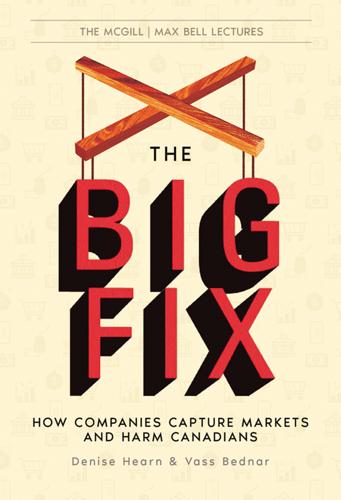
The Big Fix: How Companies Capture Markets and Harm Canadians
by
Denise Hearn
and
Vass Bednar
Published 14 Oct 2024
Firms compete in highly globalized and financialized markets, and ownership of IP and intangible assets like data, now constitute a core vector of competition. As former Blackberry co-CEO, Jim Balsillie, has emphasized, “IP and data are the most valuable economic and national security assets, and they are used to create new products, markets and revenue. Innovative companies don’t compete on costs in supply chains. Instead, they compete in global value chains with their ability to collect rents based on IP ownership.”164 Nowhere are these shifts more evident than in the ongoing global patent wars that have intensified significantly in recent years. Patent and trademark applications have soared, and China dominates, accounting for 46.8 percent of all global filings in 2022.165 Patents and IP protection are government-granted monopolies, which can undermine productivity when the largest companies patent and trademark vast swaths of the innovation ecosystem.
…
Re-focusing on ensuring markets, companies, and workers are resilient to future disruptions will bolster our prosperity as a nation. Industry to Ecosystem One of the core points of our book has been that our outdated notions of industries need to be abandoned. The focus of competition has moved from individual industries to global value chains with ecosystems of assets. For this reason, perfectly defining a relevant market has become less useful over time. A foundational component of any competition case is market definition, but because defining the relevant market is increasingly complex and challenging, it is easily exploited.

The New Harvest: Agricultural Innovation in Africa
by
Calestous Juma
Published 27 May 2017
In recent years, multinational companies are starting to invest in agriculture by sourcing local raw materials, for example, but more must be done to spur new industries and services. This increase in investment has resulted in improved productivity, better incomes, new jobs, and it has helped to open up access to global value chains. Only 6% of Africa’s crop area is irrigated (4% in sub-Saharan Africa), compared to 37% in Asia and 14% in Latin America. Furthermore, more than 40% of the rural population lives in arid or semi-arid conditions, which have the least agricultural potential. Similarly, about 50 million people in sub-Saharan Africa and 200 million people in North Africa and the Middle 16 THE NEW HARVEST East live in areas with absolute water scarcity.
…
The COMESA harmonization agenda—now implemented through its specialized agency, the Alliance for Commodity Trade in Eastern and Central Africa—was initiated to provide mechanisms for wise and responsible use of genetically modified organisms in commercial planting, trade, and emergency food assistance. COMESA, within its mandate of regional economic integration, recognizes the need to support member states in resolving non-tariff barriers that constrain markets and stifle the integration of food products into regional and global value chains, as an innovative strategy to promote market access to regional and international trade. 250 THE NEW HARVEST Such systems are vital to assuring the quality, safety, and efficacy of locally manufactured products and their positive contribution to public health. Moreover, the success of domestic production will partly depend on intra-regional and intra-continental trade to create viable market sizes.
…
This will help address challenges such as sanitary and phytosanitary measures that affect the quality and marketability of agricultural products; management of trans-boundary resources such as water bodies and forests; building of regional infrastructure; promotion of 252 THE NEW HARVEST collaborative research; monitoring of key commitments of member states, particularly the one on earmarking 10% of the national budget for the agriculture sector. For Africa to effectively integrate into the global value chain, it needs to embrace global quality standards starting inside the farm gate. One organization is leading the way, not just in defining these standards, but in offering training and certification in the fields of Africa. GlobalG.A.P. is an independent certification system for Good Agricultural Practice (GAP), founded by members of the Euro-Retailer Produce Working Group in 1997.
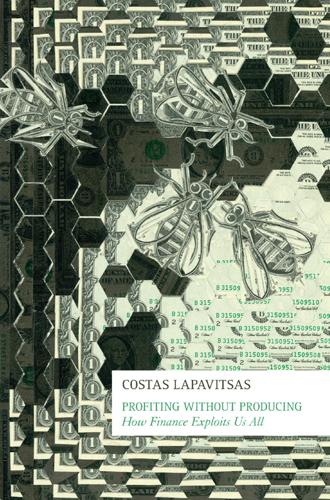
Profiting Without Producing: How Finance Exploits Us All
by
Costas Lapavitsas
Published 14 Aug 2013
Paris: Syros, 1996. 31 Chesnais, ‘Mondialisation du capital et régime d’accumulation à dominante financiére’. 32 See, for instance, Gérard Duménil and Dominique Lévy, Capital Resurgent, Cambridge, MA: Harvard University Press, 2004; Gérard Duménil and Dominique Lévy, ‘The Real and Financial Components of Profitability (United States, 1952–2000)’, Review of Radical Political Economics 36:1, 2004, pp. 82–110; Gérard Duménil and Dominique Lévy, The Crisis of Neoliberalism, Cambridge, MA: Harvard University Press, 2011. 33 Gérard Duménil and Dominique Lévy, ‘Finance and Management in the Dynamics of Social Change (Contrasting Two Trajectories: United States and France)’, 26 June 2006. 34 Claude Serfati, ‘Le role actif de groupes à dominante industrielle dans la financiarisation de l’économie’, in La mondialisation financière : genèse, coût et enjeux, ed. François Chesnais, Paris: Syros, 1996. Claude Serfati, ‘Financial Dimensions of Transnational Corporations, Global Value Chains and Technological Innovations’, Journal of Innovation Economics 2:2, 2008. Claude Serfati, ‘Transnational Corporations as Financial Groups’, Work Organisation, Labour and Globalisation 5:1, 2011, pp. 10–38. 35 François Morin, ‘A Transformation in the French model of Shareholding and Management’, Economy and Society 29, 2000.
…
, Work, Employment and Society 23: 2009, pp. 775–86. 68 William Lazonick and Mary O’Sullivan, ‘Maximizing Shareholder Value: A New Ideology for Corporate Governance’, Economy and Society 29:1, 2000. See also William Milberg, ‘Shifting Sources and Uses of Profits: Sustaining US Financialization with Global Value Chains’, Economy and Society 37:3, 2008; and William Milberg and Deborah Winkler, ‘Financialisation and the Dynamics of Offshoring in the USA’, Cambridge Journal of Economics 34, 2010. 69 Masahiko Aoki, Information, Incentives and Bargaining in the Japanese Economy, Cambridge: Cambridge University Press, 1988; Masahiko Aoki, ‘Toward and Economic Model of the Japanese Firm’, Journal of Economic Literature 28, 1990; Masahiko Aoki, ‘The Japanese Firm as a System of Attributes: A Survey and Research Agenda’, in The Japanese Firm: Sources of Competitive Strength, ed.
…
, DESA Working Paper No. 26, ST/ESA/2006/DWP/26, United Nations Department of Economic and Social Affairs, 2006. Milanovic, Branko, Worlds Apart: Measuring International and Global Inequality, Princeton, NJ: Princeton University Press, 2005. Milberg, William, ‘Shifting Sources and Uses of Profits: Sustaining US Financialization with Global Value Chains’, Economy and Society 37:3, 2008, pp. 420–51. Milberg, William, and Deborah Winkler, ‘Financialisation and the Dynamics of Offshoring in the USA’, Cambridge Journal of Economics 34, 2010, pp. 275–93. Milgrom, Paul, and John Roberts, ‘The Economics of Modern Manufacturing: Technology, Strategy and Organization’, American Economic Review 80, 1990, pp. 511–28.

Marx at the Arcade: Consoles, Controllers, and Class Struggle
by
Jamie Woodcock
Published 17 Jun 2019
See “Video Games Tax Relief,” Ukie, https://ukie.org.uk/a2f/VGTR. 17Ukie, “The Games Industry in Numbers.” 18Olsberg-SPI and Nordicity, “Economic Contribution of the UK’s Film,” 52. 19Juan Mateos-Garcia, Hasan Bakhshi, and Mark Lenel, A Map of the UK Games Industry (London: Nesta, 2014), 6. 20Brendan Sinclair, “GTA V Dev Costs over $137 Million, Says Analyst,” GamesIndustry.biz, February 1, 2013, www.gamesindustry.biz/articles/2013-02-01-gta-v-dev-costs-over-USD137-million-says-analyst. 21Aphra Kerr, The Business and Culture of Digital Games: Gamework/Gameplay (London: Sage, 2006), 4. 22Graham Kirkpatrick, Computer Games and the Social Imaginary (Cambridge: Polity, 2013), 109. 23Paul Thompson, Rachel Parker, and Stephen Cox, “Labour and Asymmetric Power Relations in Global Value Chains: The Digital Entertainment Industries and Beyond,” in Putting Labour in its Place: Labour Process Analysis and Global Value Chains, eds. Kirsty Newsome et al. (London: Palgrave, 2015), 57. 24Kirkpatrick, Computer Games and the Social Imaginary, 117. 25Mateos-Garcia, Bakhshi, and Lenel, A Map of the UK Games Industry, 4. 26Olsberg-SPI and Nordicity, Economic Contribution of the UK’s Film, 52. 27Mateos-Garcia, Bakhshi, and Lenel, A Map of the UK Games Industry, 16. 28Olsberg-SPI and Nordicity, “Economic Contribution of the UK’s Film,” 52. 29Stephen E.
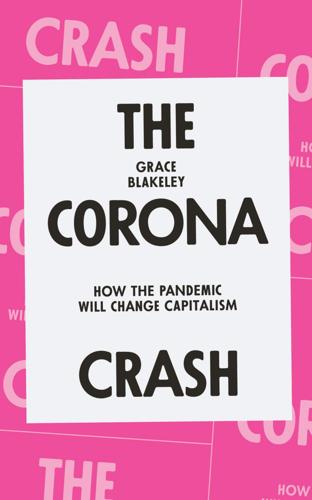
The Corona Crash: How the Pandemic Will Change Capitalism
by
Grace Blakeley
Published 14 Oct 2020
Capital flows into UK finance and North Sea oil drove up the value of sterling, making it even harder for the UK’s manufacturers to compete internationally.26 In 1970, financial and insurance activities made up 5 per cent of total gross value added, compared with 27 per cent for the manufacturing sector; by 2007, manufacturing and finance both made up about 10 per cent of the UK economy.27 Most of these manufacturing jobs did not disappear – they were exported to the rest of the world. The UK became an internationalised and financialised economy, with a significant professional-managerial class whose high wages were premised upon hyper-exploitation lower down the global value chain.28 Today, the British economy is more dependent upon the services sector than any other G7 economy.29 The bulk of the lower middle and working classes did not, however, immediately stand to benefit from Thatcher’s transformation of the economy. As the state replaced the targeting of full employment with the targeting of inflation as the aim of macroeconomic policy, and as anti-union legislation accompanied the precaritisation of work, the power of workers declined drastically relative to their bosses.
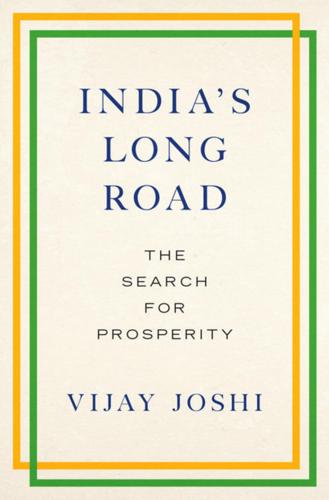
India's Long Road
by
Vijay Joshi
Published 21 Feb 2017
(The losses would be greater if China joined the US-led mega-regionals.) Correspondingly, India could gain substantially if it engaged fully with the new entities.36 It could acquire markets for exports of services and manufactured goods (including, crucially, labour-intensive manufactures such as textiles) and a much-needed entry into global value chains. Exposure to cheaper imports and higher standards could well spur productivity growth, directly, as well as indirectly by catalysing domestic reform efforts. Thus, India urgently needs to devise a strategy to deal with the PTA jig-saw. In my judgement, the safest course, because it would hedge all bets, would be try and energize the slow-moving RCEP talks but simultaneously open negotiations to join APEC, with a view to a possible entry into the TPP, and eventually into the FTAAP, if the latter became a reality.37 At the same time, India should shift away from negotiating shallow bilateral agreements with all and sundry.
…
(It is noteworthy that no country has achieved durable super-fast growth, especially of its manufacturing sector, that has not had super-fast growth in its exports.) Indian policymakers have also failed to recognize the changing character of international trade, especially the importance of global value chains and the associated movements in the direction of tighter ‘behind the border’ disciplines. All of India’s major trading partners are now contemplating, negotiating, or concluding mega- regional agreements that take these new developments on board. When completed, these agreements are potentially likely to cover more than two- thirds of world trade and to set its rules and framework for years to come.
…
India would gain easier access to foreign markets for exports of services and manufactures (including, crucially, labour-intensive manufactures such as apparel and clothing). Exposure to lower-cost imports and higher foreign standards could raise productivity in Indian manufacturing and services, and prepare these sectors to participate in global value chains. At the same time, as in many countries (e.g. in China, after it joined the WTO), trade policy commitments may serve to catalyse domestic reform efforts. Fourthly, India should also fight to keep the WTO process going because multilateralism continues to have some solid advantages (see Chapter 12).

We Are All Fast-Food Workers Now: The Global Uprising Against Poverty Wages
by
Annelise Orleck
Published 27 Feb 2018
She has held sobbing mothers in her arms and tracked down damning evidence. She knows who is responsible for the regularly occurring factory disasters that have taken the lives of thousands of young Bangladeshi workers, and she is no longer willing to let them hide behind their complex and fragmented global value chains. “We don’t want to know how complicated your supply chain is,” she says. “There’s a worker and a clothing company. I don’t want to know who is in between.” Multinational clothing corporations must be held accountable, Akter believes. There’s a moral bottom line—life and death, burned and crushed limbs.
…
Roots of Change, Food Policy Councils, Via Campesina, Food First, and others are laying the groundwork for healthier, more inclusive farm, food, and water systems. The Worker Rights Consortium, International Labor Rights Forum, and global unions including the ITUC, IUF, UNI Global Union, and IndustriALL are constructing new global values chains—built on fair trade and worker justice. To build these ambitious new systems, activists are organizing broad coalitions, rejecting internecine battles and tests of ideological purity. Workers, labor and community organizers, consumers, faith, civil rights, and youth groups, politicians, government officials, environmental and philanthropic networks are entering alliances built on flexibility, mutual respect, creativity, and courage.

Stakeholder Capitalism: A Global Economy That Works for Progress, People and Planet
by
Klaus Schwab
Published 7 Jan 2021
They could process much more information much faster and instantaneously coordinate with co-workers anywhere, at the touch of their fingertips. And it helped to unleash the greatest wave of globalization in history: manufacturing could be decoupled from back-office, a company headquarters from its global value chain. This IT and Internet revolution is what allowed countries such as China, Indonesia, Vietnam, and Mexico to integrate in the world economy, helping hundreds of millions of people enter the global middle class. Its net effect on a global scale was undoubtedly positive. In the First and Second Industrial Revolutions, wealth was accumulated at the top and in the middle of Western industrialized nations.
…
Its exploration and drilling activities could only be profitable if more oil was found, drilled, transported, and used. The global shipping industry it dominated was responsible for a large and increasing share of CO2 emissions, which if left unchecked could reach 17 percent of the world's total CO2 emissions by 2050.2 And the global value chains it enabled didn't only mean more people had access to more goods but also that an ever-smaller group of global companies and their owners could dominate an ever-larger share of global industries, increasing market concentration and worsening inequalities of income and wealth. For Snabe, though, joining the board was a kind of homecoming.

Stakeholder Capitalism: A Global Economy That Works for Progress, People and Planet
by
Klaus Schwab
and
Peter Vanham
Published 27 Jan 2021
They could process much more information much faster and instantaneously coordinate with co-workers anywhere, at the touch of their fingertips. And it helped to unleash the greatest wave of globalization in history: manufacturing could be decoupled from back-office, a company headquarters from its global value chain. This IT and Internet revolution is what allowed countries such as China, Indonesia, Vietnam, and Mexico to integrate in the world economy, helping hundreds of millions of people enter the global middle class. Its net effect on a global scale was undoubtedly positive. In the First and Second Industrial Revolutions, wealth was accumulated at the top and in the middle of Western industrialized nations.
…
Its exploration and drilling activities could only be profitable if more oil was found, drilled, transported, and used. The global shipping industry it dominated was responsible for a large and increasing share of CO2 emissions, which if left unchecked could reach 17 percent of the world's total CO2 emissions by 2050.2 And the global value chains it enabled didn't only mean more people had access to more goods but also that an ever-smaller group of global companies and their owners could dominate an ever-larger share of global industries, increasing market concentration and worsening inequalities of income and wealth. For Snabe, though, joining the board was a kind of homecoming.

Aftershocks: Pandemic Politics and the End of the Old International Order
by
Colin Kahl
and
Thomas Wright
Published 23 Aug 2021
Kamran Reza Chowdhury, “COVID-19 Cases Soar in Bangladesh; Thousands Defy Lockdown to Attend Imam’s Funeral,” Benar News, April 20, 2020, https://www.benarnews.org/english/news/bengali/cases-climb-04202020173834.html. 10. Thomas Farole, “Making Global Value Chains Work for Workers,” World Bank Blogs, December 19, 2019, https://blogs.worldbank.org/jobs/making-global-value-chains-work-workers; Bangladesh Poverty Assessment: Facing Old and New Frontiers in Poverty Reduction (Washington, DC: World Bank, 2019), 11, https://www.developmentaid.org/api/frontend/cms/file/2019/10/Bangladesh-PA_-Volume-1.pdf; “Poverty Rate Comes Down at 21.8pc in 2018: BBS,” Daily Star, May 13, 2019, https://www.thedailystar.net/country/news/poverty-rate-comes-down-218pc-2018-bbs-1742953; “The World Bank in Bangladesh,” World Bank, https://www.worldbank.org/en/country/bangladesh/overview, accessed September 15, 2020; “World Bank Country and Lending Groups,” World Bank, https://datahelpdesk.worldbank.org/knowledgebase/articles/906519-world-bank-country-and-lending-groups, accessed March 13, 2021. 11.
…
Piecing Together the Poverty Puzzle: Poverty and Shared Prosperity (Washington, DC: World Bank Group, 2017), 1, https://openknowledge.worldbank.org/bitstream/handle/10986/30418/9781464813306.pdf. 50. Raoul Leering and Timme Spakman, “Countries Hit Most by the Coronavirus Value Chain Shock,” ING Think, April 2, 2020, https://think.ing.com/articles/countries-hurt-most-by-covid-19-global-value-chain-shock; Global Economic Prospects, June 2020 (Washington, DC: World Bank Group, 2020), https://openknowledge.worldbank.org/handle/10986/33748. 51. World Bank Group, Global Economic Prospects, June 2020, 137, 141; Goldberg and Reed, “The Effects of the Coronavirus Pandemic,” 25. 52.

The Fourth Industrial Revolution
by
Klaus Schwab
Published 11 Jan 2016
This is the reason why Massachusetts Institute of Technology (MIT) Professors Erik Brynjolfsson and Andrew McAfee have famously referred to this period as “the second machine age”2, the title of their 2014 book, stating that the world is at an inflection point where the effect of these digital technologies will manifest with “full force” through automation and and the making of “unprecedented things”. In Germany, there are discussions about “Industry 4.0”, a term coined at the Hannover Fair in 2011 to describe how this will revolutionize the organization of global value chains. By enabling “smart factories”, the fourth industrial revolution creates a world in which virtual and physical systems of manufacturing globally cooperate with each other in a flexible way. This enables the absolute customization of products and the creation of new operating models. The fourth industrial revolution, however, is not only about smart and connected machines and systems.
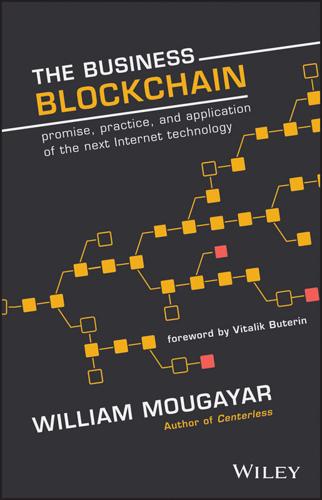
The Business Blockchain: Promise, Practice, and Application of the Next Internet Technology
by
William Mougayar
Published 25 Apr 2016
Only then can the crypto economy claim to have made potential dents in the current financial system in contrast to the “one nation-one sovereign currency” paradigm. A NEW FLOW OF VALUE The blockchain enables a new “flow of value,” a concept related to 2001 Nobel laureate in economics Michael Spence’s5 work on how digital technologies transform global value chains through the dynamics of information flows. Michael Spence observed that emerging economies were growing at rates not seen before, primarily due to the enabling effect of the larger global economy. He attributed the acceleration in the flow of knowledge, technology and learning, as the main linkage to the acceleration in their growth.

Apocalypse Never: Why Environmental Alarmism Hurts Us All
by
Michael Shellenberger
Published 28 Jun 2020
Margaret McMillan, Dani Rodrik, and Claudia Sepulveda, “Structural Change, Fundamentals, and Growth: A Framework and Case Studies,” NBER Working Paper 23378, National Bureau of Economic Research, May 2017, https://www.nber.org/papers/w23378.pdf, 10. 48. Dani Rodrik, “New Technologies, Global Value Chains, and the Developing Economies,” Pathways for Prosperity Commission Background Paper 1, September 2018, https://drodrik.scholar.harvard.edu/files/dani-rodrik/files/new_technologies_global_value_chains_developing_economies.pdf, 7. 49. Robert Gellatelly and Ben Kiernan, The Specter of Genocide: Mass Murder in Historical Perspective (Cambridge, UK: Cambridge University Press, 2003), 290–91. 50.
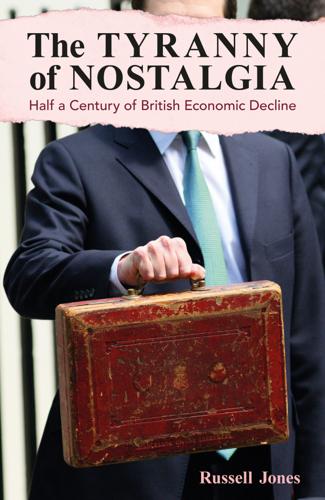
The Tyranny of Nostalgia: Half a Century of British Economic Decline
by
Russell Jones
Published 15 Jan 2023
The economic liberalization that followed the dissolution of the Soviet Union in 1991 brought much of eastern Europe into the world economy, but the most crucial new entrant at this time was China. In purchasing power parity terms, China’s shares of global exports and GDP doubled from 1.0% and 2.0%, respectively, in 1980 to 2% and 4% in 1990, and then doubled again to 4% and 8% by 2000. Moreover, this increase in economic heft coincided with the rising importance of global value chains (GVCs), whereby a country imports intermediate goods to produce goods for export. This vertical specialization accelerated greatly in the 1990s, with low-cost China often at its epicentre. The foreign direct investment (FDI) channel of globalization was especially important for service sectors, which typically account for more than two-thirds of the output of developed economies.
…
Britain’s tradables sector would also need to boost its underlying competitiveness if it was to take advantage of the fast-growing developing markets in Asia and elsewhere – markets it would have to conquer as substitutes for Europe. A soft pound alone could not do the job. Except in a few brief periods, it had never done so before, and complex global value chains, in which there was a high import content, had in any case reduced the responsiveness of exports to the exchange rate. Against this backdrop, there were some new and important initiatives by the May government in areas of supply-side policy. The institutional oversight of public infrastructure was improved.
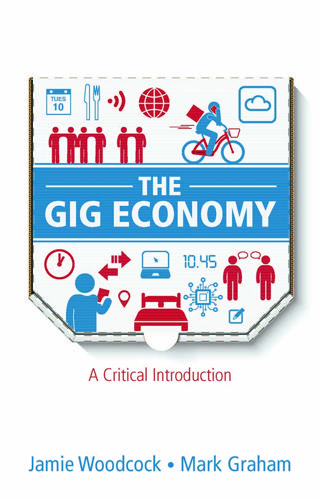
The Gig Economy: A Critical Introduction
by
Jamie Woodcock
and
Mark Graham
Published 17 Jan 2020
Fudge, J. (2017) The future of the standard employment relationship: Labour law, new institutional economics and old power resource theory. Journal of Industrial Relations, 59(3): 374–92. Gandini, A. (2016) The Reputation Economy: Understanding Knowledge Work in Digital Society. London: Palgrave Macmillan. Gereffi, G., Humphrey, J. and Sturgeon, T. (2005) The governance of global value chains. Review of International Political Economy, 12(1): 78–104. Goodwin, T. (2015) The Battle Is for the Customer Interface. TechCrunch, 3 March. Available at: https://techcrunch.com/2015/03/03/in-the-age-of-disintermediation-the-battle-is-all-for-the-customer-interface/ Goos, M. and Manning, A. (2007) Lousy and lovely jobs: The rising polarization of work in Britain.
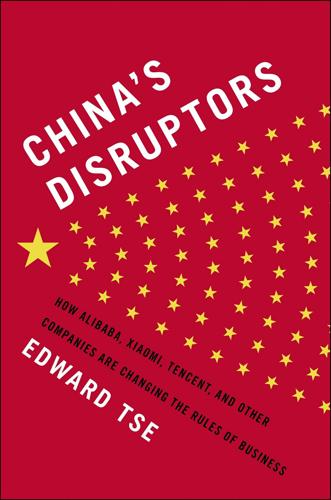
China's Disruptors: How Alibaba, Xiaomi, Tencent, and Other Companies Are Changing the Rules of Business
by
Edward Tse
Published 13 Jul 2015
These new sources of competitive advantage can manifest in various ways—new products, technologies, brands, ways to go to market, service models, and even entire business models. Foreign companies will find themselves compelled to integrate the advantages that China-based operations have into their global value chains—developing products there, selling into its markets, and then using the economies of scale China allows to take those goods to the rest of the world. Chinese companies are already doing this: driven by the hunger and ambition of their owners, many want to take their products everywhere, especially to the world’s developed markets.
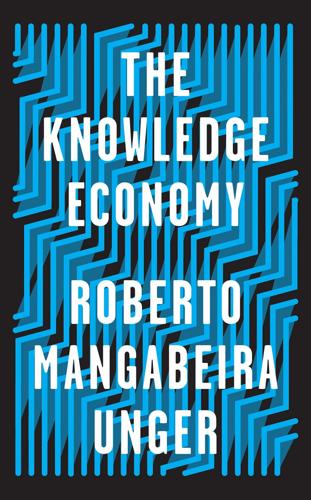
The Knowledge Economy
by
Roberto Mangabeira Unger
Published 19 Mar 2019
Developing countries can no longer rely on this prescription to sustain economic growth and begin to close the gap separating them from the richest economies. Some have long suffered from what has been described as premature deindustrialization. Others have tried to prolong the life of mass production by combining low wages (by international standards) with a specialized and subordinate niche in global value chains, useful to the megafirms of knowledge-intensive production. They have embraced the commoditized side of a business that in its upper reaches, typically in a faraway rich country, exemplifies the familiar insular form of experimentalist, knowledge-intensive production. Only a few (especially China and India and to a lesser degree Russia and Brazil) have established, always in the insular mode, an outpost of the cosmopolitan knowledge economy.
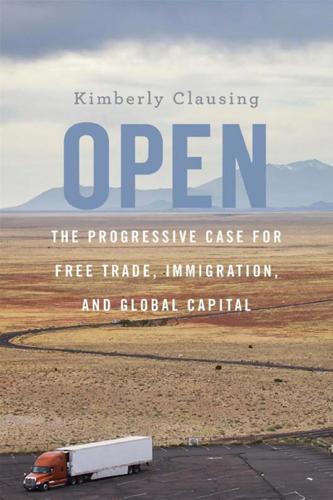
Open: The Progressive Case for Free Trade, Immigration, and Global Capital
by
Kimberly Clausing
Published 4 Mar 2019
See Robert Koopman, William Powers, Zhi Wang, and Shang-Jin Wei, “Give Credit Where Credit Is Due: Tracing Value Added in Global Production Chains,” Working Paper 16426, NBER Working Papers, National Bureau of Economic Research, 2010, Table A3. A more recent analysis suggests a share of 27 percent. See Alonso de Gortari, “Disentangling Global Value Chains,” Harvard University Working Paper, November 26, 2017. 7. Andrew B. Bernard, J. Bradford Jensen, Stephen J. Redding, and Peter K. Schott, “Global Firms,” Working Paper 22727, NBER Working Papers, National Bureau of Economic Research, 2016. 8. See Kenneth L. Kraemer, Greg Linden, and Jason Dedrick, “Capturing Value in Global Networks: Apple’s iPad and iPhone,” University of California, Irvine, University of California, Berkeley, and Syracuse University Working Paper, 2011. 9.
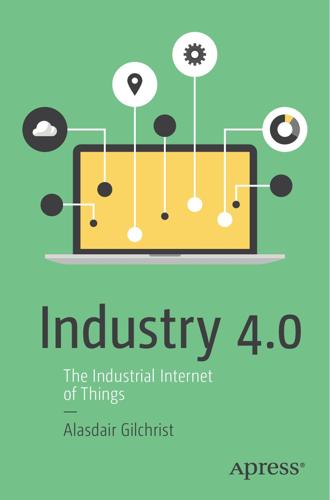
Industry 4.0: The Industrial Internet of Things
by
Alasdair Gilchrist
Published 27 Jun 2016
The essence of vertical networking stems from the use of cyber-physical production systems (CPPSs), which lets factories and manufacturing plants react quickly and appropriately to variables, such as demand levels, stock levels, machine defects, and unforeseen delays. 199 200 Chapter 13 | Introducing Industry 4.0 Similarly, networking and integration also involve the smart logistics and marketing services of an organization, as well as its smart services, since production is customized in such a way that it is individualized and targeted specifically to customers. 2. Horizontal integration through global value chain networks Integration will facilitate the establishment and maintenance of networks that create and add value. The first relationship that comes to mind when we talk of horizontal integration is the one between the business partners and the customers. However, it could also mean the integration of new business models across countries and even across continents, making for a global network. 3.

The Making of a World City: London 1991 to 2021
by
Greg Clark
Published 31 Dec 2014
New studies acknowledge that urban success and failure is to at least some extent shaped by leadership, management and planning guidance (AT Kearney, 2014). Benchmarks identify significant challenges for urban policy leaders to attract and retain educated people, generate economic opportunity, market effectively, and position their city and its firms within global value chains. Effective governance regimes, proficient and transparent public service delivery, and focused public sector support for entrepreneurial innovation and smartness, are all determinants of urban competitiveness and functionality (Economist Intelligence Unit and Siemens, 2009; McKinsey Global Institute, 2011). 11 London in the next decade: Implications of the rise of other world cities The system of world cities has changed considerably even since 2008, let alone since 1991.
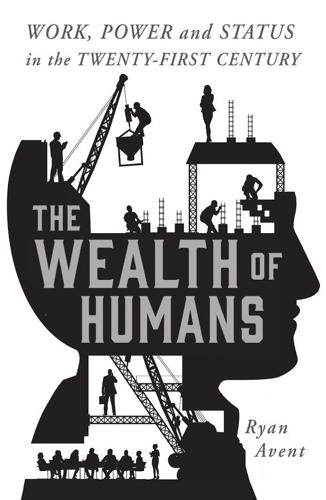
The Wealth of Humans: Work, Power, and Status in the Twenty-First Century
by
Ryan Avent
Published 20 Sep 2016
Ibid; the internal quote is from Mitch, David, ‘The Role of Education and Skill in the British Industrial Revolution’, Mokyr, Joel, ed. The British Industrial Revolution: An Economic Perspective, 1993. 11. Subramanian, Arvind, and Kessler, Martin, ‘The Hyperglobalization of Trade and its Future’, Word Trade Organization, 2013. 12. Dedrick, Jason, Kraemer, Kenneth, and Linden, Greg, ‘Who Profits from Innovation in Global Value Chains? A Study of the iPod and Notebook PCs’, Industrial and Corporate Change, February 2010. 13. Marshall, Alfred, Principles of Economics (1890). 14. Copeland, Rob, and Hope, Bradley, ‘Schism atop Bridgewater, the World’s Largest Hedge Fund’, Wall Street Journal, 5 February 2016. 15. Robischon, Noah, ‘How BuzzFeed’s Jonah Peretti is Building a 100-year Media Company’, Fast Company, 16 February 2016. 16.
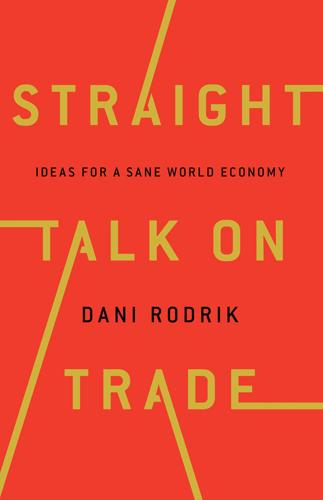
Straight Talk on Trade: Ideas for a Sane World Economy
by
Dani Rodrik
Published 8 Oct 2017
Advanced democracies have built—and retain (despite recent setbacks)—extensive social safety nets in the form of unemployment insurance, retirement pensions, and family benefits. The world economy now has functional international institutions—such as the International Monetary Fund and the World Trade Organization—that it lacked prior to the Second World War. Global value chains have entrenched strong business lobbies for continued integration that even an instinctive protectionist like Donald Trump will find hard to overcome. Last but not least, truly extremist political movements such as fascism and communism have been largely discredited. Still, the conflicts between a hyperglobalized economy and social cohesion are real, and mainstream political elites ignore them at their peril.
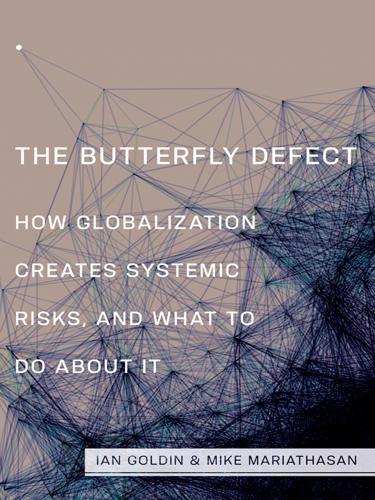
The Butterfly Defect: How Globalization Creates Systemic Risks, and What to Do About It
by
Ian Goldin
and
Mike Mariathasan
Published 15 Mar 2014
The period 1840–1914 was mainly one of trans-Atlantic migration, whereas the movements that followed the aftermath of the Second World War and accelerated during the 1980s have spanned the entire globe.13 The global movement of goods and people has been facilitated by the expansion and development of an increasingly complex system of roads, railways, shipping routes, and air traffic.14 In 2008 world container port traffic surpassed the threshold of 500 million TEUs (twenty-foot equivalent units) for the first time and was seven times greater than in 1988.15 World air travel has more than doubled since the mid-1990s (see figure 1.1). Over the same period, the real value of world trade has more than quadrupled as the demand for high-value traded goods has risen more rapidly than incomes, and production processes have fragmented geographically with the rise in global value chains, facilitated by more efficient logistics.16 What most distinctively separated recent decades from previous ones was the coincidence of dramatic political, economic, and technological change.17 The end of the Soviet Union and the integration of China and many former autarkic regimes into the world community coincided with the technological revolution that brought us Amazon (in 1994), eBay (in 1995), Google (in 1998), and Facebook (in 2004).
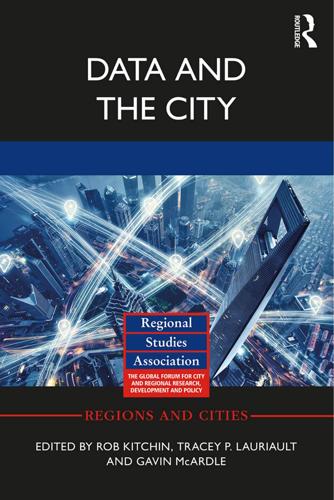
Data and the City
by
Rob Kitchin,Tracey P. Lauriault,Gavin McArdle
Published 2 Aug 2017
Kogler 46 Leadership and Place Edited by Chris Collinge, John Gibney and Chris Mabey 45 Migration in the 21st Century Rights, outcomes, and policy Kim Korinek and Thomas Maloney 44 The Futures of the City Region Edited by Michael Neuman and Angela Hull 43 The Impacts of Automotive Plant Closures A tale of two cities Edited by Andrew Beer and Holli Evans 42 Manufacturing in the New Urban Economy Willem van Winden, Leo van den Berg, Luis de Carvalho and Erwin van Tuijl 41 Globalizing Regional Development in East Asia Production networks, clusters, and entrepreneurship Edited by Henry Wai-chung Yeung 40 China and Europe The implications of the rise of China as a global economic power for Europe Edited by Klaus Kunzmann, Willy A Schmid and Martina Koll-Schretzenmayr 39 Business Networks in Clusters and Industrial Districts The governance of the global value chain Edited by Fiorenza Belussi and Alessia Sammarra 38 Whither Regional Studies? Edited by Andy Pike 33 Geographies of the New Economy Critical reflections Edited by Peter W. Daniels, Andrew Leyshon, Michael J. Bradshaw and Jonathan Beaverstock 32 The Rise of the English Regions? Edited by Irene Hardill, Paul Benneworth, Mark Baker and Leslie Budd 31 Regional Development in the Knowledge Economy Edited by Philip Cooke and Andrea Piccaluga 30 Regional Competitiveness Edited by Ron Martin, Michael Kitson and Peter Tyler 37 Intelligent Cities and Globalisation of Innovation Networks Nicos Komninos 29 Clusters and Regional Development Critical reflections and explorations Edited by Bjørn Asheim, Philip Cooke and Ron Martin 36 Devolution, Regionalism and Regional Development The UK experience Edited by Jonathan Bradbury 28 Regions, Spatial Strategies and Sustainable Development David Counsell and Graham Haughton 35 Creative Regions Technology, culture and knowledge entrepreneurship Edited by Philip Cooke and Dafna Schwartz 27 Sustainable Cities Graham Haughton and Colin Hunter 34 European Cohesion Policy Willem Molle 26 Geographies of Labour Market Inequality Edited by Ron Martin and Philip S.
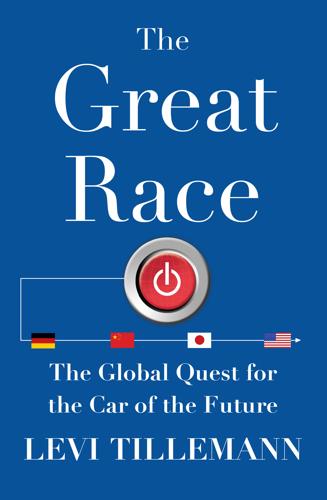
The Great Race: The Global Quest for the Car of the Future
by
Levi Tillemann
Published 20 Jan 2015
“Electric Car Stations,” accessed February 8, 2012, http://carstations.com/. Carter, Jimmy. 1982. Keeping Faith: Memoirs of a President. New York: Bantam Books. Carter, Kelley. 2003. “ ‘Hybrid’ Cars Were the Oscars’ Politically Correct Ride.” USA Today, March 30, http://usatoday30.usatoday.com/life/2003-03-30-hybrids_x.htm. Cattaneo, Oliver et al. eds. 2010. Global Value Chains in a Postcrisis World: A Developmental Perspective. The World Bank. CBS Detroit. 2012. “A123 Recalling $55M in EV Batteries Made in Livonia.” March 26, 2012. Center for Biological Diversity v. NHTSA, 1, 14831 (United States Court of Appeals for the Ninth Circuit 2007). Center for Internet and Society, Stanford Law School. 2014, “Automated Driving: Legislative and Regulatory Action.”
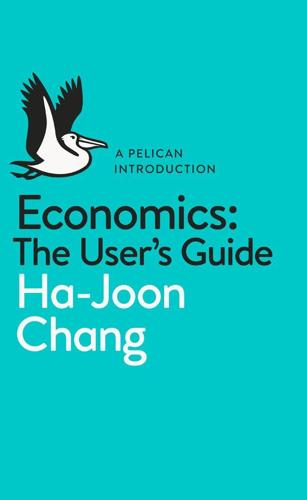
A Pelican Introduction Economics: A User's Guide
by
Ha-Joon Chang
Published 26 May 2014
BROMLEY Globalization in Question, 3rd edition (Cambridge: Polity, 2009). R. KOZUL-WRIGHT AND P. RAYMENT The Resistible Rise of Market Fundamentalism: Rethinking Development Policy in an Unbalanced World (London: Zed Books and Third World Network, 2007). W. MILBERG AND D. WINKLER Outsourcing Economics: Global Value Chains in Capitalist Development (Cambridge and New York: Cambridge University Press, 2013). D. RODRIK The Globalization Paradox (Oxford: Oxford University Press, 2011). J. STIGLITZ Making Globalization Work (London and New York: W. W. Norton and Co., 2006). M. WOLF Why Globalization Works (New Haven and London: Yale University Press, 2004).

Exponential: How Accelerating Technology Is Leaving Us Behind and What to Do About It
by
Azeem Azhar
Published 6 Sep 2021
Ltd, 2015) p. 36. 22 The best book on the intangible economy is Jonathan Haskel and Stian Westlake, Capitalism without Capital: The Rise of the Intangible Economy (Princeton, NJ: Princeton University Press, 2018). 23 Intangible Asset Market Value Study, Ocean Tomo <https://www.oceantomo.com/intangible-asset-market-value-study/> [accessed 27 August 2020]. 24 Stian Westlake, quoted in Azeem Azhar, ‘Understanding the Intangible Economy’, Exponential View, 5 July 2019 <https://www.exponentialview.co/p/capitalism-without-capital> [accessed 28 August 2020]. 25 World Intellectual Property Report 2017: Intangible Capital in Global Value Chains (World Intellectual Property Organization, 2017). 26 Barney Pell, personal conversation with the author, June 2015. 27 Matt Turck, ‘The Power of Data Network Effects’, Matt Turck [blog], 2016 <https://mattturck.com/the-power-of-data-network-effects/> [accessed 3 August 2020]. 28 Seyed M.
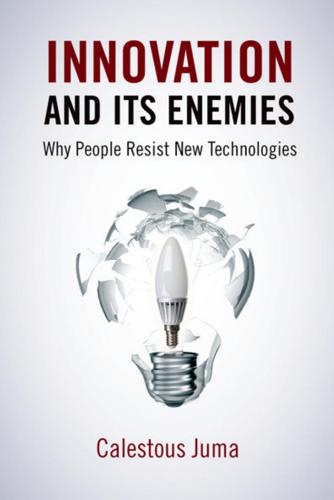
Innovation and Its Enemies
by
Calestous Juma
Published 20 Mar 2017
Not only did the adoption of coffee create new values and social norms, but its impact influenced lasting structural changes such as the design of urban and rural areas and the associated pattern of social interaction.34 Coffeehouses created novel institutions that played new roles in society and wielded their own political power.35 Coffee adoption helped create new industries and stimulated the expansion of trade in complementary sectors such as aluminum.36 These changes extend to the wider global value chains created through the cultivation, production, process, distribution, and marketing of coffee and coffee products. The need for inclusive approaches is also reflected in strategies that are aimed at slowing down the adoption of a technology rather than seeking to extinguish it. Several examples come to mind.
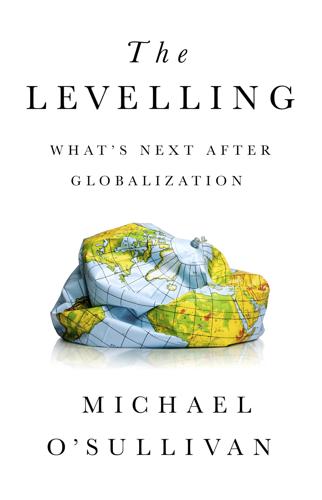
The Levelling: What’s Next After Globalization
by
Michael O’sullivan
Published 28 May 2019
Ansar, A., B. Flyvbjerg, A. Budzier, and D. Lunn. “Does Infrastructure Lead to Economic Growth or Economic Fragility? Evidence from China.” Oxford Review of Economic Policy 32, no. 3 (2016): 360–390. Auer, R., C. Borio, and A. Filardo. “The Globalisation of Inflation: The Growing Importance of Global Value Chains.” Bank for International Settlements (BIS) Working Papers, Monetary and Economic Department, Working Paper 602, 2017. Autor, D., D. Dorn, and G. Hanson. “The China Syndrome: Local Labor Market Effects of Import Competition in the United States.” American Economic Review 103, no. 6 (2012): 2121–2168.

World Cities and Nation States
by
Greg Clark
and
Tim Moonen
Published 19 Dec 2016
It is also the junction box for an economy which has become one of the world’s largest shipbuilders, steel producers and construction contractors. Seoul’s distinctive government and business model has become an inspiration to other Asian cities, and to others elsewhere, showing how to climb global value chains while continually managing the adverse consequences of rapid growth and preparing the city and its citizens for new cycles of development. Korea has a long history of centralised rule and until recently the central government was the decisive actor in Seoul’s development. This chapter highlights how, in a small and densely populated unitary country, the national urban development and public investment strategy was phenomenally successful in the first phases of industrial growth.
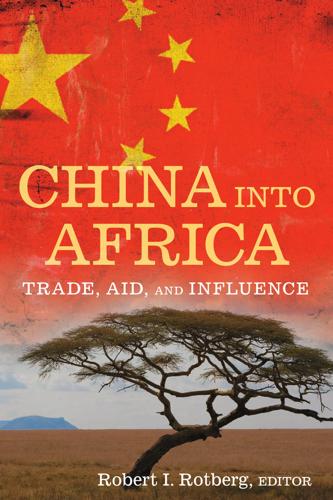
China into Africa: trade, aid, and influence
by
Robert I. Rotberg
Published 15 Nov 2008
Natural resources provide a quick launching base for African countries to generate value-added activities. Although still limited to a few countries, such as South Africa and Nigeria, resource-based, manufactured products, such as aluminum, could become a viable export to China. The second aspect relates to the prospects for broader participation in global value chains. There are growing vertical complementarities along value chains between Africa and China. Among the top African exports to and imports from China, there are clear complementarities in the cotton-textile-garment value chain. Raw material (cotton) is supplied by West African countries to 05-7561-4 ch5.qxd 9/16/08 4:13 PM Page 107 Vanguard of South-South Commerce 107 China, and intermediate materials (fabrics) are supplied by China to apparel producers in South Africa, Mauritius, Nigeria, and other countries in sub-Saharan Africa.
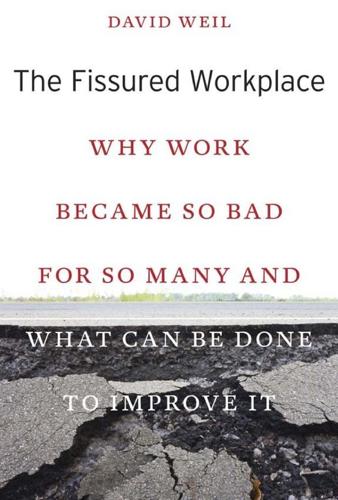
The Fissured Workplace
by
David Weil
Published 17 Feb 2014
Boston Review 26, no. 1: 1–20. Galbraith, John Kenneth. 1971. The New Industrial State. 2nd ed. Boston: Houghton Mifflin. Gazel, Neil. 1990. Beatrice: From Buildup through Breakup. Urbana: University of Illinois Press. Gereffi, Gary, John Humphrey, and Timothy Sturgeon. 2005. “The Governance of Global Value Chains.” Review of International Political Economy 12, no. 1: 78–104. Ghilarducci, Teresa. 2008. When I’m Sixty-Four: The Plot against Pensions and the Plan to Save Them. Princeton, NJ: Princeton University Press. Gibson, John, and Steven Stillman. 2009. “Why Do Big Firms Pay Higher Wages? Evidence from an International Database.”

More: The 10,000-Year Rise of the World Economy
by
Philip Coggan
Published 6 Feb 2020
Parts may cross international borders many times before they are assembled into the finished product.48 Perhaps 30–50% of the trade in manufactured goods occurs within individual multinational companies.49 As they became aware of this, many developing countries slashed their tariffs so that they could become part of these global value chains. MEMA estimates that around a third of all the parts that make US cars are imported, while in Germany, the proportion is 45%.50 Why have car manufacturers done this? To cut costs, of course. That is why imposing tariffs on imports will push up the price of domestically produced cars one way or the other – either the manufacturers will pay the tariffs and pass on the cost to customers, or they will disrupt their supply chains and make cars more expensively at home.

The Long Game: China's Grand Strategy to Displace American Order
by
Rush Doshi
Published 24 Jun 2021
In this case, whether it can cope with the strategic competitive pressure of the United States is a severe test for China.”78 Most see a declining United States lashing out, sometimes self-destructively, at an ascendant China. Ren Jingjing from CASS argues, “The United States is the biggest constraint on China’s road to its rise and national rejuvenation” and seeks to “remove China from the global value chain” to undermine it.79 Zhu Feng, who often cautions a more restrained foreign policy, worries that triumphalism in China’s discourse—particularly the discourse on “great changes unseen in a century”—will prematurely trigger Western anxieties. “The more China’s rise sees forward momentum, the more Western countries will worry about losing their power advantages, and strong and powerful containment of and checks and balances on China will become more obvious.

Slouching Towards Utopia: An Economic History of the Twentieth Century
by
J. Bradford Delong
Published 6 Apr 2020
It went to Poland, next door to the manufacturing powerhouse of Germany, whose firms found enormous benefits in spreading out their value chains to make use of the low-wage labor found next door. It went to Mexico, but much less so than those of us who had high hopes for the North American Free Trade Agreement (NAFTA) in the early 1990s expected. Elsewhere? By and large, not. It is a quilt. The opportunity to grasp a substantial place in global value-chain production networks opened only to a few in the global south. Firms had to invite local producers to join their value networks. And while knowledge can be broadcast via the internet, trust still requires face-to-face interaction. It may have been the transoceanic nonstop jet flight and the international hotel chains that were the key link in this second unbundling.
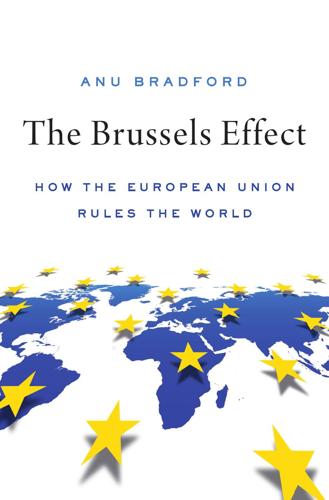
The Brussels Effect: How the European Union Rules the World
by
Anu Bradford
Published 14 Sep 2020
Traditional farming also retains an important cultural role in many societies, making many developing countries hesitant to embrace the GMOs.56 Many African countries also rely on Europe as their main export destination, restricting their ability to use GMOs. Critics assert that the EU’s certification, labeling, and traceability requirements are overly burdensome for producers in these less-resourced countries, and effectively exclude many small-scale farmers from global value chains.57 At the same time, recent research demonstrates beneficial effects of EU’s high food safety standards on African producers who earn a much higher return from trading in the EU once standards are achieved and certification obtained.58 For instance, using farm-level data of 386 Ghanaian pineapple farmers who adopted either GlobalGAP or organic certification, Kleemann et al. found that certifications increased the farmers’ return on investment, offsetting the costs of certification.

The Making of Global Capitalism
by
Leo Panitch
and
Sam Gindin
Published 8 Oct 2012
Akyuz, “Capital Flows to Developing Countries,” p. 22. 49 Richard Kozul-Wright and Paul Rayment, “Globalization Reloaded,” UNCTAD Discussion Paper No. 167, January 2004, Table 3, p. 32; US Bureau of Labor Statistics, “International Labor Comparisons,” available at bls.gov; Erin Lett and Judith Bannister, “China’s Manufacturing Employment and Compensation Costs: 2002–2006,” Monthly Labour Review, April, 2009. 50 See Timothy Sturgeon, Johannes Van Biesebroeck, and Gary Gereffi, “Value Chains, Networks and Clusters: Reframing the Global Automotive Industry” Journal of Economic Geography 8: 3 (2008), pp. 297–321. 51 Stephen Hymer, ‘The “Multinational Firm and the Law of Uneven Development’, in J. Bhawgwati, ed., Economic and the World Order from the 1970s to the 1990s, New York: Free Press, 1972. 52 Jason Dedrick, Kenneth L. Kraemer, and Greg Linden, “Who Profits from Innovation in Global Value Chains? A Study of the iPod and Notebook PCs,” Industry Studies, Alfred P. Sloan Foundation, Boston, May 2008. 53 Peter F. Cowhey and Jonathon D. Aronson, Transforming Global Information and Communication Markets: The Political Economy of Innovations, Cambridge, MA: MIT Press, 2009, p.15. Cowhey and Aronson see American high-tech leadership as having been renewed since the early 1980s, thereby consolidating American postwar technological dominance: “Since 1945 the US market has been the most consistent agenda-setter for the global market.

The Outlaw Ocean: Journeys Across the Last Untamed Frontier
by
Ian Urbina
Published 19 Aug 2019
Hugh Whittaker, and Glenn Simmons, “New Zealand’s Turbulent Waters: The Use of Forced Labour in the Fishing Industry” Global Networks: A Journal of Transnational Affairs 16, no. 1 (2016); Barry Torkington, “New Zealand’s Quota Management System—Incoherent and Conflicted,” Marine Policy 63 (Jan. 2016); Margo White, “The Dark Side of Our Fishing Industry,” Ingenio: Magazine of the University of Auckland (Spring 2014); Christina Stringer, “Worker Exploitation in New Zealand: A Troubling Landscape,” Human Trafficking Research Coalition, University of Auckland, Dec. 2016; Christina Stringer et al., “Labour Standards and Regulation in Global Value Chains: The Case of the New Zealand Fishing Industry,” Environment and Planning A: Economy and Space 48, no. 10 (2016). The U.S. State Department released: “Trafficking in Persons Report 2012,” U.S. Department of State, June 2012. Fishing companies had two years: The best way to understand this action is to read New Zealand’s 2011 report for the Ministerial Inquiry into Foreign Charter Vessels (FCV).

Accessory to War: The Unspoken Alliance Between Astrophysics and the Military
by
Neil Degrasse Tyson
and
Avis Lang
Published 10 Sep 2018
As for the global commons, the European Union sees it as primarily a civil, not a military, domain: “[O]ur security and prosperity increasingly rely on the protection of networks, critical infrastructure and energy security, on preventing and addressing proliferation crises, as well as on secure access to the global commons (cyber, airspace, maritime, space) on which our modern societies depend in order to thrive.”14 The European Commission construes the lengthening list of space actors mostly in economic terms: Europe now faces “tougher global competition,” “high dependence on non-European critical components and technologies,” “a global value chain that increasingly attracts new companies and entrepreneurs.” On the political front, Europe is far less concerned about contestation of leadership—America’s usual worry—than about cooperation, the upholding of international standards, and sustainable access to space for all who reach for it.15 In short, European postwar interest in space—and science in general—has been predominantly nonmilitary.
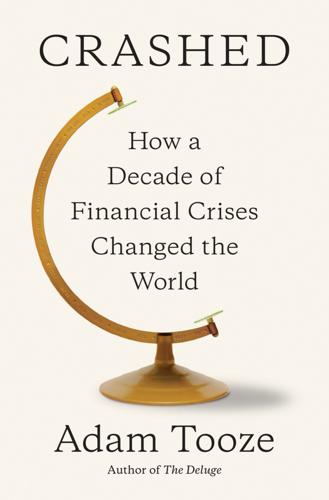
Crashed: How a Decade of Financial Crises Changed the World
by
Adam Tooze
Published 31 Jul 2018
Paul Krugman has vigorously and convincingly defended the 1930s-era IS-LM as essential to understanding the mechanics of the recession and the sluggish recovery; see P. Krugman, “IS-LMentary” (Conscience of a Liberal Blog), New York Times, October 9, 2011, and “Economics in the Crisis” (Conscience of a Liberal Blog), New York Times, March 5, 2012. 21. R. Baldwin, “Global Supply Chains: Why They Emerged, Why They Matter, and Where They Are Going,” in Global Value Chains in a Changing World, ed. D. K. Elms and P. Low (Geneva: WTO, 2013), 13–60. 22. H. S. Shin, “Globalisation: Real and Financial,” BIS 87th Annual General Meeting, https://www.bis.org/speeches/sp170625b_slides.pdf. 23. M. Obstfeld and A. M. Taylor, “International Monetary Relations: Taking Finance Seriously” (CEPR Discussion Paper No.

EuroTragedy: A Drama in Nine Acts
by
Ashoka Mody
Published 7 May 2018
“The Geographic Distribution and Characteristics of U.S. Bank Failures, 2007–2010: Do Bank Failures Still Reflect Local Economic Conditions?” Federal Reserve Bank of St. Louis Review 92, no. 5: 395–415. Auer, Raphael, Claudio Borio, and Andrew Filardo. 2017. “The Globalisation of Inflation: The Growing Importance of Global Value Chains.” BIS Working Papers 602, Basel, January. Auerbach, Alan J., and Yuriy Gorodnichenko. 2012. “Measuring the Output Responses to Fiscal Policy.” American Economic Journal: Economic Policy 4, no. 2: 1–27. Austin, Tony. 1992. “Danes Voted No from Anxiety over National Identity.” Reuters News, June 3.

Palo Alto: A History of California, Capitalism, and the World
by
Malcolm Harris
Published 14 Feb 2023
From there, the railroads build themselves, as the baron Shelgrim said. Even the winners can’t stop the train, even when their own kids are in the way. Footnotes i When sold directly to consumers through Apple stores or the company site. J. Dedrick, K. L. Kraemer, and G. Linden, “Who Profits from Innovation in Global Value Chains?: A Study of the iPod and Notebook PCs,” Industrial and Corporate Change 19, no. 1 (June 22, 2009): 81–116. ii Steve Jobs downplayed the significance: “We look at everything at these companies,” he told the press. “Foxconn is not a sweatshop. It’s a factory—but my gosh, they have restaurants and movie theatres… but it’s a factory.